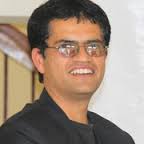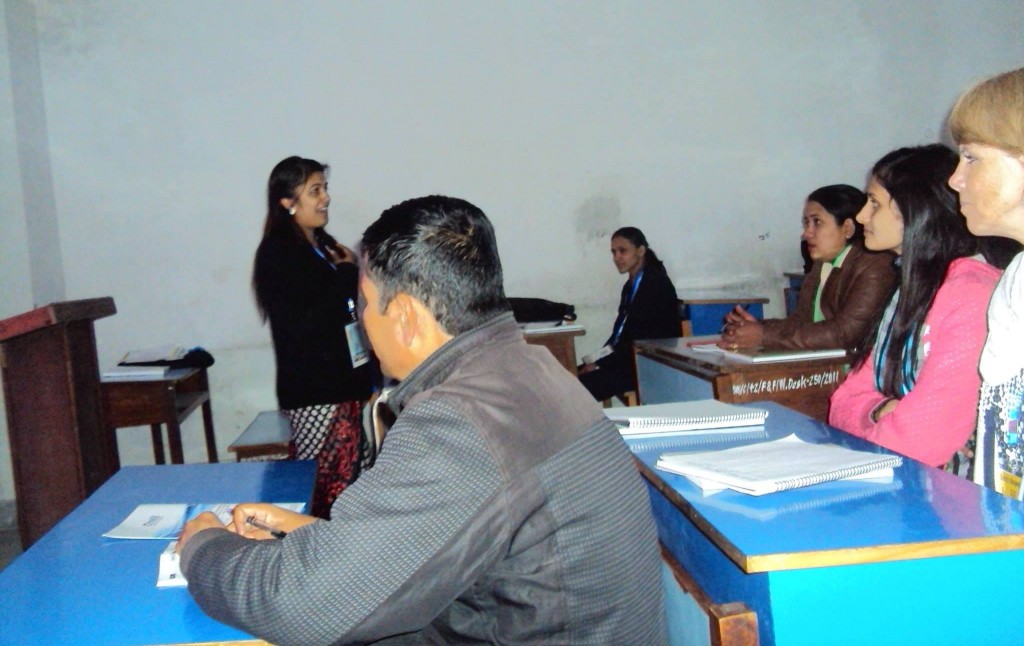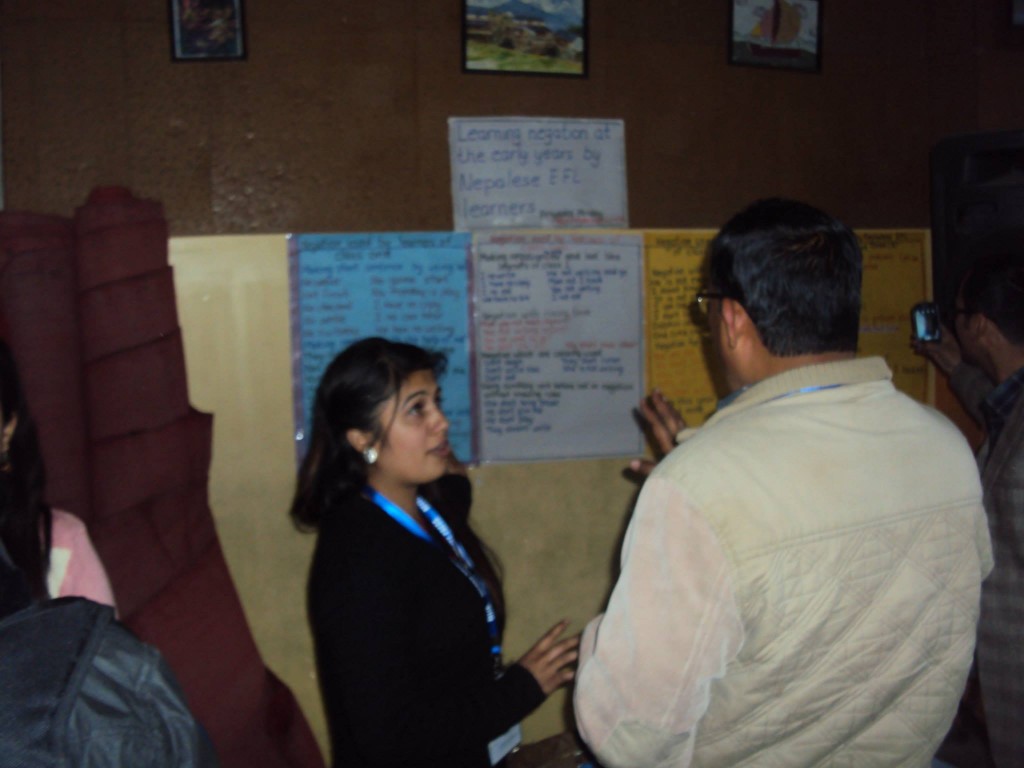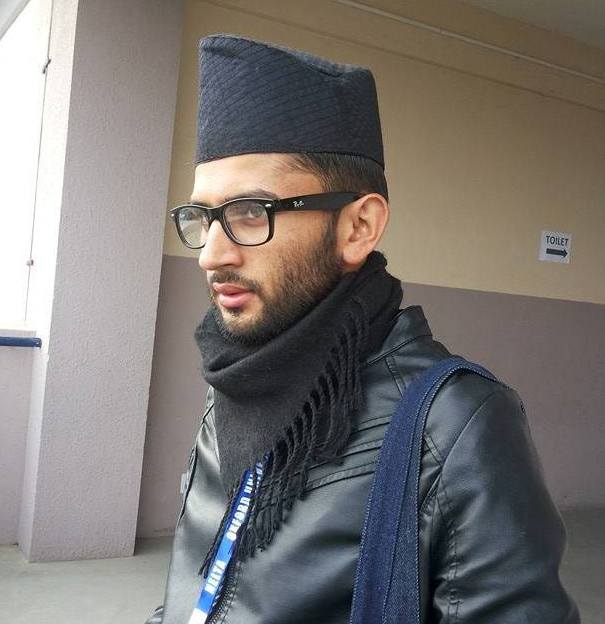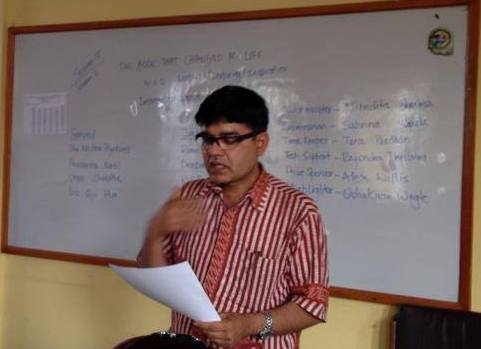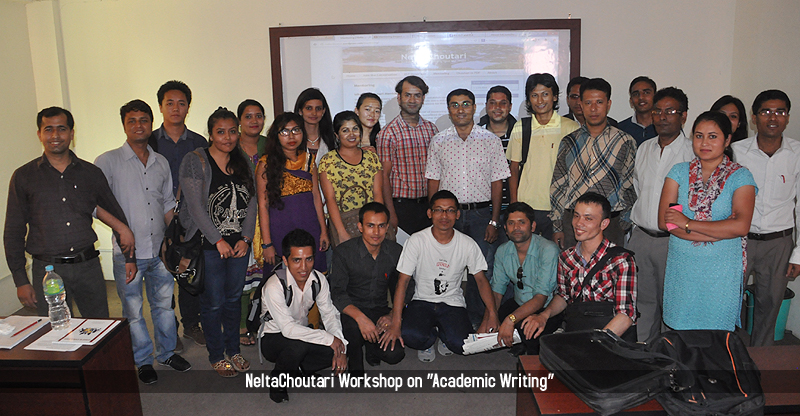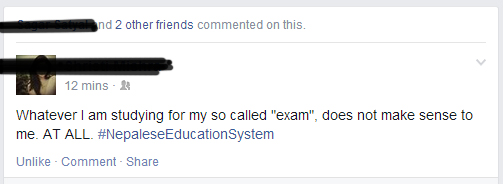In community schools, teaching and learning of English has always been taken as a ‘difficult’ task. Teachers and students confess that it is a difficult subject to teach and learn respectively. As a teacher, do we reflect on our own classes? Do we ask ourselves how are our classes going? Reflection upon our own classrooms certainly assists us to improve our pedagogical practices.
In this connection, our Choutari editor, Ashok Raj Khati has asked to five English teachers to reflect on their own English classrooms from different regions of Nepal. In the context of English language teaching, they briefly express their ideas in relation to resources, participation of students, use of English and L1, their best practices in English classroom and challenges they face.The five secondary level English teachers are: Babu Ram Basnet (Solukhumbu) Chandra Singh Dhami (Ramechhap), Kamal Raj Basyal (Palpa), Durga Prasad Pandey (Dang) and Khagendra Nath ‘Biyogi’ (Bajhang).
 Babu Ram Basnet Mahendrodaya Secondary School, Salyan, Solukhumbu
Babu Ram Basnet Mahendrodaya Secondary School, Salyan, Solukhumbu
Teaching English is not always a fun but it is a very tough job in this part of country. We do not have enough resources, like the internet and other supportive materials, to facilitate English language teaching. Therefore, students do not get enough and authentic exposure in English. I have to read out listening text myself as we do not receive cassettes in time. There are 65 students in grade 10, which is a large classroom in our context. In the same way, the large classrooms are a barrier to many participatory activities. There are many activities to be done and performed by students such as drama, simulation, games and role plays. I am not able to do all these in such a large class which ultimately affect their learning achievement.
Students come from different socio- cultural and economic backgrounds, they usually speak in Nepali language among them. They are generally good in writing but hesitate to speak in English. They have fear to lose face among their friends if they commit any mistakes. So that, I am not satisfied with their fluency in English. To some extent, I am applying traditional method while teaching English. It is often challenging to correct their home assignments in a class of 45 minutes. I use group and peer correction technique several times. I conduct class test in regular interval to know how they are doing. The most challenging part of my teaching is developing speaking skill on the part of students.
 Chandra Singh Dhami Manthali Higher Secondary School, Manthali, Ramechhap
Chandra Singh Dhami Manthali Higher Secondary School, Manthali, Ramechhap
My classroom in tenth and ninth grades are large, which contains the students with mixed ability. Likewise, students come from diverse socio-cultural and linguistic backgrounds. We have a ‘media’ hall equipped with different facilities such as internet, speakers, tape recorder, dictionary and projector. I often make them watch movies, biographies of poets, popular TV show and show activities related to English language learning. For instance, while teaching English sounds, I often download native speakers’ accent for them to practice. I regularly conduct unit and monthly test. It provides me timely feedback on the areas to improve. We have cassette players, charts and other daily use materials. Students sometimes prepare charts in different lessons.
Majority of students try to speak in English in the classroom. I often use group work and drilling. I make them write in group as a process writing. Students also speak in Nepali language particularly when they do not understand reading texts. I encourage them to speak in English even outside the classroom. Students also take part in speech and debate competitions. I use shorter expression. Even if, students have positive motivational orientation towards English, I am still not satisfied with the progress. Many students do not have same pace in learning English and it can’t be. However, the challenge for me is to cope the students with different levels of English language proficiency.
 Kamal Raj Basyal Krishna secondary school, Peepaldada-Jheskang, Palpa
Kamal Raj Basyal Krishna secondary school, Peepaldada-Jheskang, Palpa
There are 56 students at grade 10 in my school which accommodates 29 girls, 26 students from Magar community and 5 from Dalits. Three language use can be observed there in the classroom – Magar, Nepali and English. They are from low income and mostly from middle class families. Their socio-cultural background is not much trouble for me while teaching English as they have positive motivational orientation toward learning English. Likewise, we have whiteboards, electricity, audio-tape/cassette players and necessary charts in English in the classroom. But, we do not have the internet facility in school.
I have found that my students are active in different learning activities in English class where I try my best to use English only and inspire them to use it. I believe it maximizes exposure in English. Next I have generated weekly discussion on certain topics related to the course. In regular interval, I conduct several contests like debate, spelling and quiz in English. Regarding teaching technique, I generally use group and pair work and role plays to facilitate English language learning. I also encourage them to go to library and read books. Therefore, teaching English has always been a fun for me. I am satisfied with their progress. I specially enjoy teaching grammar and vocabularies. However, I often find myself challenged while teaching listening and free writing. So I need to be well prepared to deal with listening and writing activities.
 Durga Prasad Pandeya Padmodaya Public Model Secondary School, Ghorahi, Dang
Durga Prasad Pandeya Padmodaya Public Model Secondary School, Ghorahi, Dang
I work in a government funded school having the classes from grade 1 to 12. It has around 87 classes and 5, 000 students. Generally, the student- teacher ratio is one to 50-78 students. Therefore, we teach in large classes. We have irregular internet access and the multimedia projector is only in the audio visual room and students have very less access to them. We also have a smart board but there is no skilled man power to operate it but white boards are available in each room. Teachers make charts and posters for the upper classes and use printed charts the lower/primary classes.
When I reflect on my English classes, my students work very happily in pair and groups particularly to practice speaking skills and some project based tasks. Many of them are found excited and interested to work in group or pair but a few are found reluctant to do all these activities and they prefer individual tasks. I instruct them both in English and Nepali languages. I particularly need to use Nepali as they understand me and are unable to respond in English. They are also not encouraged to converse in English. Another challenge of teaching English is being unable to create English speaking environment in school, which is the result of the low exposure of English in lower classes. It eventually affects their performance in upper classes.
 Khagendra Nath ‘Biyogi’ Bhairab Higher Secondary School, Jhota, Bajhang
Khagendra Nath ‘Biyogi’ Bhairab Higher Secondary School, Jhota, Bajhang
I as an English teacher in this rural area, find myself encouraged in the recent years. Although the classroom is large, we have some minimum resources to facilitate English language class such as tape recorders, computers and other necessary materials. They are taken to computer room to play various language games. Similarly, I make use of laptop and the internet in the classroom. Students prepare charts of CVs, wild life reserve, language functions and so on inside the classroom. There are many different charts in schools, student make use of them in English class in different ways. Many of them use Nepali language inside the classroom. However, I inspire them to speak English. Every day, I ask them a question (as a part of general knowledge), related to English and they enjoy it very much. (For instance, how many words can you make from the word ‘examination’?). I also conduct quiz, debate and speech competition. Regarding the participation of students, they normally work in group and pair. Students are always invited to the front of the classroom to work or present the task assigned. Few students also feel shy to do so.
In the same way, I am selective on using methods and techniques in my ELT classes. Most importantly, I reflect back on my classroom activities to figure out what is working and what is not. Students are found improving the skills of English language these days. It might be the result of increased exposure of English through technology and social media. Another important activity that I do is to visit students’ parents (nearby school) once a week. I talk to them about their children’s progress. While talking with them, I figure out four types of students – outstanding, excellent, good/average and low achiever. The most challenging task for me is to teach and work with the low achievers. Some of them cannot read and write properly. Therefore, it is always challenging to find the strategies to support them.
Choutari team sincerely acknowledge teachers who shared their valuable reflections in this interactive article. They have particularly highlighted the diverse pedagogical practices and issues while teaching English in peripheral parts of Nepal. Now, we request you to feel free to share your thoughts and reflections after reading these reflections here.


